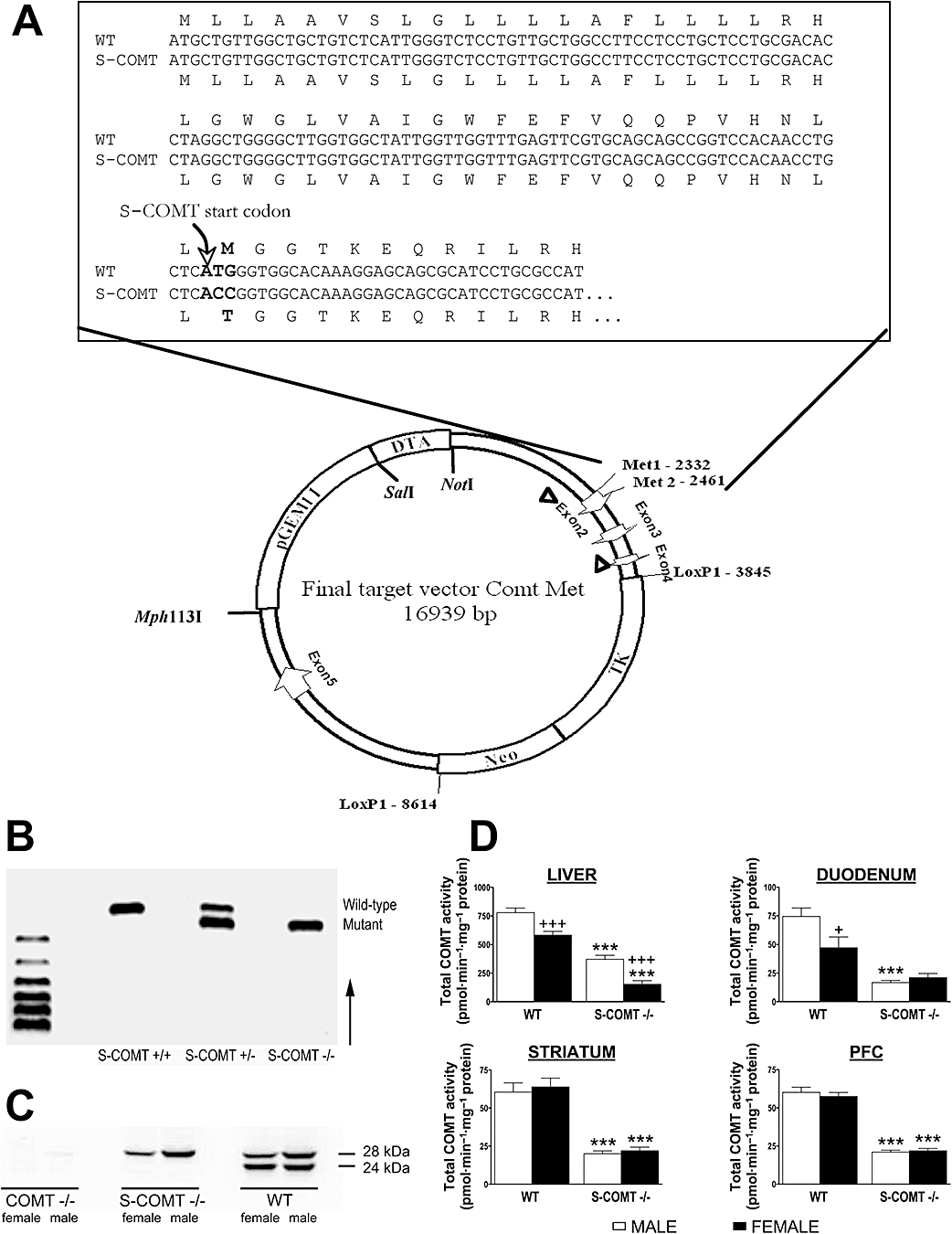Figure 1.

(A) Constructed ∼17 kb targeting vector containing ∼2.5 kb long 5′ homology arm up to Mutated MET2, from Mut-MET2 to floxTK/NEO cassete ∼1.4 kb central arm, ∼4.7 kb floxTKNeo cassette and ∼4 kb short 3′ homology arm. Positions of the Comt exons, vector and selection cassettes are indicated as well as the restriction sites used to linearize and the LoxP1 sites flanking the Neo and TK cassettes removed after recombination in ES cells. Greater detail of the sequence around Met2 in Exon 2 is shown. The DNA sequence of soluble catechol-O-methyltransferase (S-COMT)-deficient mutant is shown, and the sequence of the corresponding protein product is aligned on top (wild type) and bottom (S-COMT). The bases mutated are shown in bold font. A new AgeI restriction site (ACCGGT) for genotyping was introduced along with the Met44Thr mutation. (B) PCR genotyping of S-COMT-deficient animals showing wild-type (S-COMT +/+), heterozygous (S-COMT +/−) and homozygous (S-COMT −/−) genotypes consisting of wild-type allele, mutated allele or both alleles. (C) Western blot analysis visualizing the long (28 kDa) and short (24 kDa) catechol-O-methyltransferase (COMT) transcripts in the liver. (D) Total COMT activities in the liver, duodenum, striatum and prefrontal cortex (PFC) of wild-type (WT) and S-COMT-deficient (S-COMT −/−) mice. +P < 0.05 and +++P < 0.001 differs significantly from corresponding male. ***P < 0.001 differs significantly from corresponding wild-type mice. n (male/female) = 12/12 (WT) and 6/6 (S-COMT −/−).
